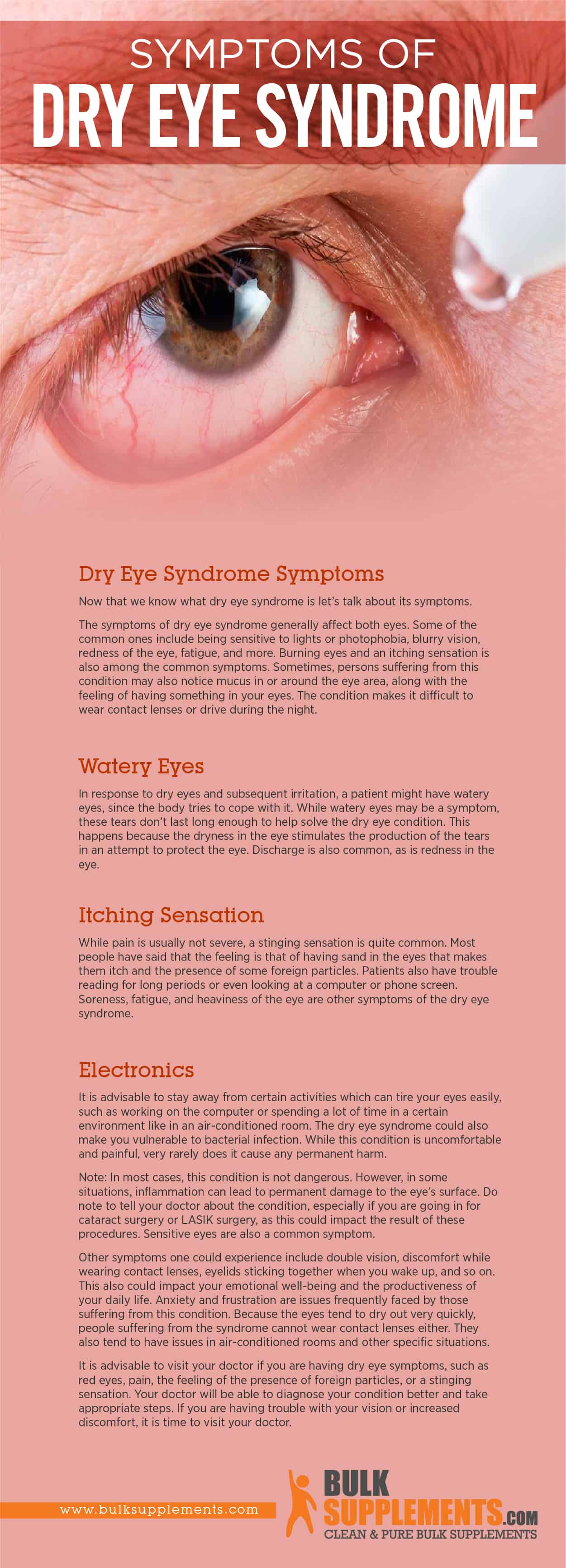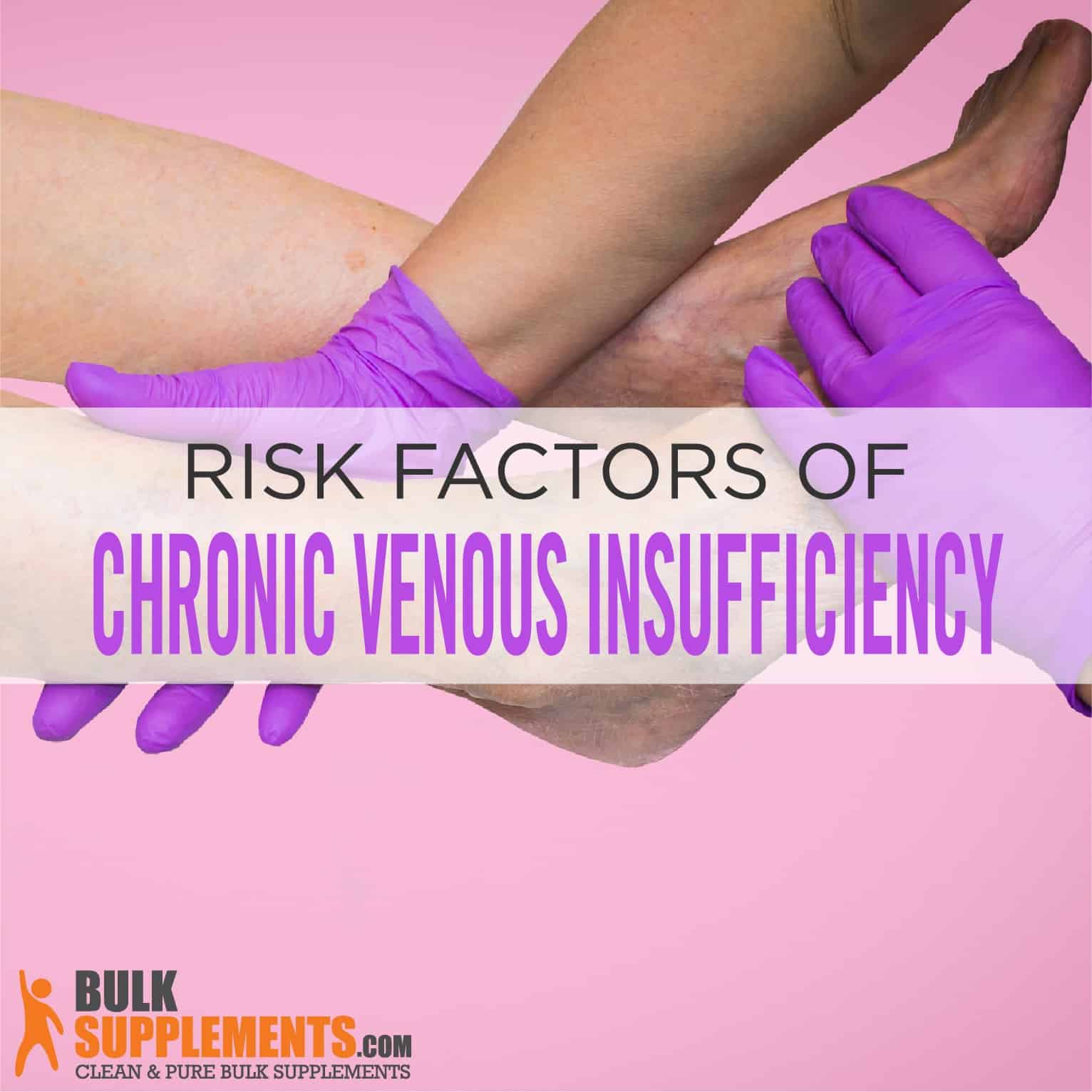Dry Eye Syndrome: Symptoms, Causes & Treatment

Dry Eye Syndrome
What is Dry Eye Syndrome?
Dry eye syndrome is a medical condition in which there is not enough moisture on the eye’s surface. This chronic absence or lack of lubrication could result in anything from mild to constant irritation and inflammation. It could even lead to scarring of the eye’s surface. While the layman’s term for this condition is “dry eye syndrome,” it also goes by the name ‘Keratitis sicca’ in medical circles. The term refers to the general lack of moisture and inflammation of the cornea.
In this condition, a person’s eyes tend to become irritated very quickly, and they also redden easily. In chronic cases, it could do a lot of damage as the feeling of scratching and itching is almost constant. The dry eye syndrome is quite a common issue, and one of the most looked at by eye doctors or ophthalmologists. As pointed out at this source, a recent study found out that as many as 48% of the public over 18 years of age have experienced dry eye symptoms. The study also suggests that almost twice the number of women are affected by this syndrome as compared to men.
Tears help lubricate the eyes and keep their surface from drying out. You might not realize it, but every time you blink, a very thin layer of tears makes its way to the eye surface, keeping it lubricated. This layer of moisture has a coat of lipids to preserve it.
A person suffering from this syndrome might not have the ability to produce sufficient tears, or their tears might not last long enough. With time, this could lead to long-term dryness and potential damage to the eyes. While the dry eye syndrome can affect people at any time and any age, it is usually more common as a person ages. Apart from existing medical conditions or health issues, certain medicines can also act as a trigger for this condition. It is common in postmenopausal women or those with arthritis.
Dry Eye Syndrome Symptoms
Now that we know what dry eye syndrome is, let’s talk about its symptoms.
The symptoms of dry eye syndrome generally affect both eyes. Some of the common ones include being sensitive to lights or photophobia, blurry vision, redness of the eye, fatigue, and more. Burning eyes and an itching sensation is also among the common symptoms. Sometimes, persons suffering from this condition may also notice mucus in or around the eye area, along with the feeling of having something in your eyes. The condition makes it difficult to wear contact lenses or drive during the night.
Watery Eyes
In response to dry eyes and subsequent irritation, a patient might have watery eyes, since the body tries to cope with it. While watery eyes may be a symptom, these tears don’t last long enough to help solve the dry eye condition. This happens because the dryness in the eye stimulates the production of the tears in an attempt to protect the eye. Discharge is also common, as is redness in the eye.
Itching Sensation
While pain is usually not severe, a stinging sensation is quite common. Most people have said that the feeling is that of having sand in the eyes that makes them itch and the presence of some foreign particles. Patients also have trouble reading for long periods or even looking at a computer or phone screen. Soreness, fatigue, and heaviness of the eye are other symptoms of the dry eye syndrome.
Electronics
It is advisable to stay away from certain activities which can tire your eyes easily, such as working on the computer or spending a lot of time in a certain environment like in an air-conditioned room. The dry eye syndrome could also make you vulnerable to bacterial infection. While this condition is uncomfortable and painful, very rarely does it cause any permanent harm.
Note: In most cases, this condition is not dangerous. However, in some situations, inflammation can lead to permanent damage to the eye’s surface. Do note to tell your doctor about the condition, especially if you are going in for cataract surgery or LASIK surgery, as this could impact the result of these procedures. Sensitive eyes are also a common symptom.
Other symptoms one could experience include double vision, discomfort while wearing contact lenses, eyelids sticking together when you wake up, and so on. This also could impact your emotional well-being and the productiveness of your daily life. Anxiety and frustration are issues frequently faced by those suffering from this condition. Because the eyes tend to dry out very quickly, people suffering from the syndrome cannot wear contact lenses either. They also tend to have issues in air-conditioned rooms and other specific situations.
It is advisable to visit your doctor if you are having dry eye symptoms, such as red eyes, pain, the feeling of the presence of foreign particles, or a stinging sensation. Your doctor will be able to diagnose your condition better and take appropriate steps. If you are having trouble with your vision or increased discomfort, it is time to visit your doctor.
Causes of Dry Eye Syndrome
Tears are a combination of fatty oils, water, and mucus. When there is a serious and chronic lack of this element, the dry eye condition comes into play. Tears are what help keep the surface of your eyes lubricated and clear. They also act as a protective measure against infections. Some of the common causes of dry eye syndrome are listed below.
- Aging
- Tear gland damage
- Medical conditions
- Medication intake
- Other causes
Some people have issues with low tear production which could also lead to dry eye syndrome. Other dry eye syndrome causes include body behavior, such as increased tear evaporation or imbalance in the tear production system. Decreased tear production is the layman term for what the medical professionals call keratoconjunctivitis sicca. A few of the causes for this are aging, intake for certain medicines, surgery, and inflammation.
Age
The dry eye condition can be seen more often with older people. It could also be triggered due to a variety of health conditions, such as rheumatoid arthritis, lupus, diabetes, scleroderma, thyroid disorders, Sjogren’s syndrome, and vitamin A deficiency.
Medicine
Some medicines could also lead to the dry eye condition. This includes antidepressants, antihistamines, medication for high blood pressure, decongestants, birth control, hormone replacement therapy, and Parkinson’s disease.
Increased Tear Evaporation
Increased tear evaporation is another cause of this syndrome. This could be due to multiple factors, such as being present in surroundings that are constantly windy or smoky. It could also be caused if one blinks very infrequently. This occurs when you are driving, working, or reading by focusing entirely.
Risk Factors
With the tear being made from three different layers, issues with any one of them could lead to the dry eye condition. Besides this, some risk factors increase the likelihood of one suffering from this syndrome. Age is one of the major ones since the tear glands weaken with age. This is also more commonly seen in women, especially when using birth control pills, during pregnancy or menopause. If the person’s diet doesn’t contain enough vitamin A or omega-3 fatty acids, this could be another thing that can trigger the condition.
Surroundings
Air heating systems, air conditioning, and indoor humidity all contribute to dry eye syndrome. If you spend a lot of time in arid climates, the risk of dry eye increases. Even those who tend to fly a lot are more prone to this condition as the airplane cabins are generally devoid of moisture. Frequent flyers are at high risk.
Other Causes
Regular smoking, eyelid issues and overusing your smartphone could all potentially cause the dry eye syndrome. The symptoms are normal for a short period soon after laser eye surgery. If it lasts, however, it is advisable to check in with your doctor.

Dry Eye Syndrome Remedies and Supplements
If you head to a doctor with dry eye syndrome, he/she would first perform a physical examination. Do not forget to let them know all about your medical history, current health condition, and if you are taking any medication at the moment. Since your work life and the surrounding where you live and work may also be relevant, you might be asked about that as well.
The doctor might advise tests that would tell them the number of tears, the rate of evaporation, and if the tear film is working properly. There are also anti-inflammatory drugs that can be prescribed.
SEE ALSO

Chronic Venous Insufficiency: Causes, Symptoms & Treatment
While eye drops are a popular treatment, there are also other forms of reliable treatments and home remedies for dry eye syndrome that you can try.
Supplements
Omega-3 fatty acid supplements are a tried and tested option. The reason for this is because eating more of this supplement will reduce the inflammation and permit more tear production. It is present in flaxseeds, palm oil, chia seeds, fatty fish, walnuts and more. It is also available in the form of pills.
Rest Your Eyes
If you frequently work on your computer or use your Smartphone a lot, try to take a break. Taking some time off can give your eyes some time to get back moisture. When using these devices, one tends to reduce their blinking. Consciously making an effort to blink will help in dealing with the issue.
Use Warm Compress
Using warm compress will help. Wash your eyes with some baby shampoo, which will release some oil in the tear gland, improving the tear quality. When finished, ensure you wash your eyes thoroughly so that no trace of the soap is left.
No Cigarettes
Cigarette smoking can quickly irritate your eyes. It could also act as a trigger in developing the issue. If you are a smoker, it is best to break the habit immediately. If you don’t smoke, do keep in mind that smoke inhaled from others’ smoking is harmful as well.
Humidifiers
Heating and cooling systems are known to dry out the moisture in the air. Using humidifiers will solve this problem and make sure that the air remains moist. If you don’t have one or don’t want to invest in one, you can place some water in a pan and keep it on your radiator.
Steroid Eye Drops
If the person is suffering from an underlying issue like psoriasis, infection in the eye, or so on, the issue needs to be treated first. Steroid drops will assist in reducing inflammation. This is an option only if the condition is severe and the use of eye drops is not helping.
Surgery
In severe cases, surgery may be the way to go. Tear ducts could be blocked to conserve tears, or silicon plugs could be placed to block the tear ducts. In both cases, the tears are conserved and stay in the eyes for a longer period.
The Bottom Line
The dry eye syndrome is developed when there is a constant lack of lubrication on the surface of the eye. This can lead to short-term pain, itching, and other problems. Common symptoms of this condition include redness of the eye, itchiness, watery eyes, blurred vision, and sensitivity to light. Certain medical conditions, intake of particular drugs, age, tear gland damage, and smoking are some of the causes of dry eye syndrome.
It is easy to keep it in check by taking a break from electronics, following a proper diet, and administering eye drops, if necessary.



